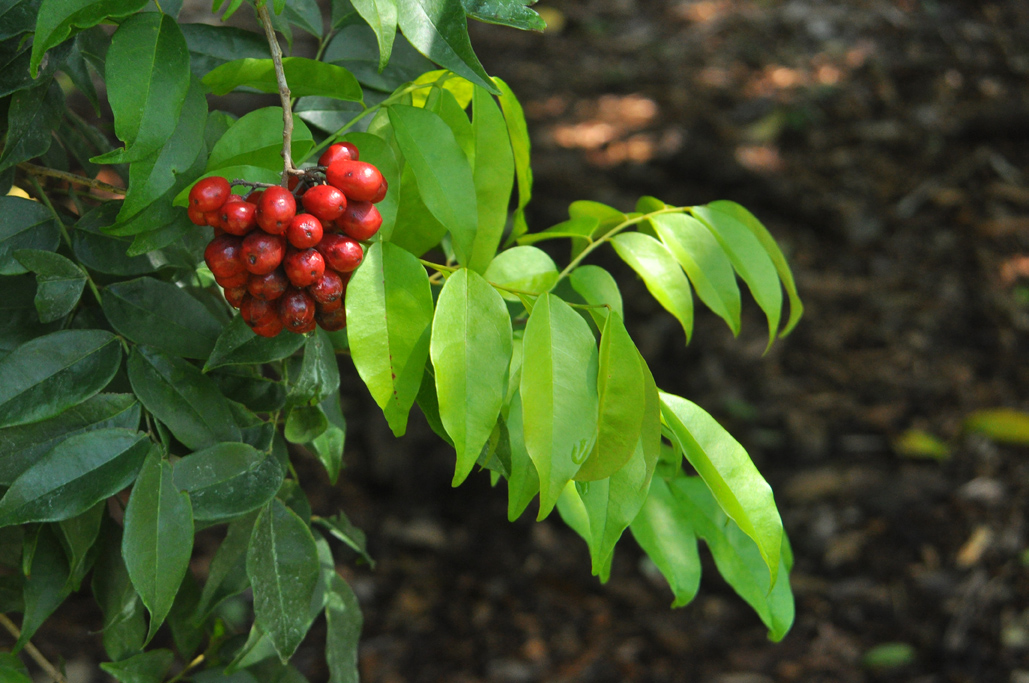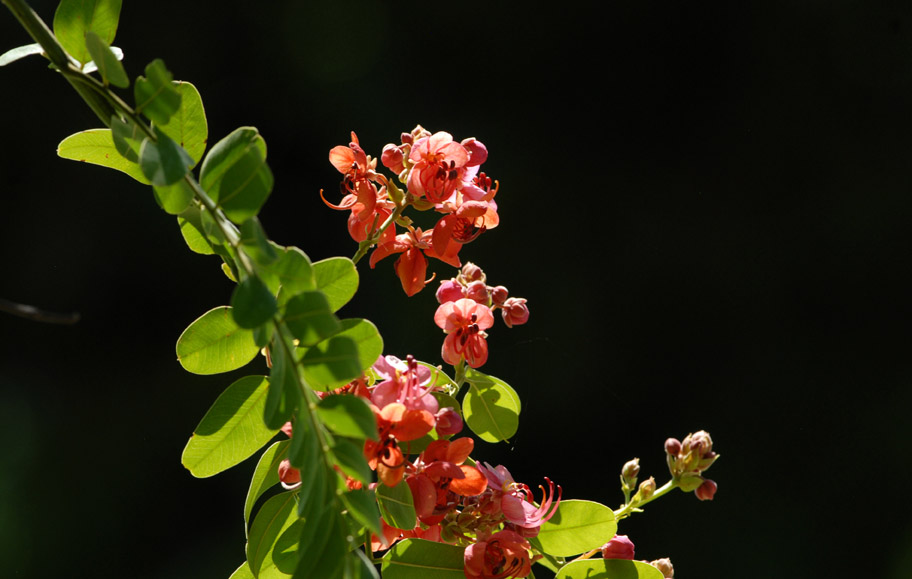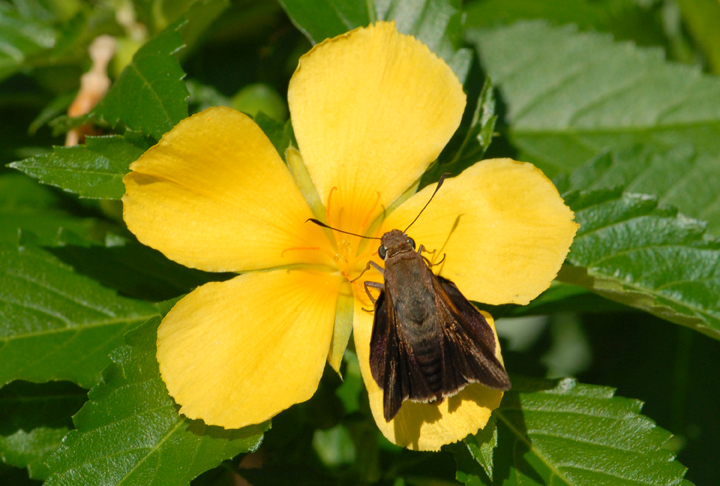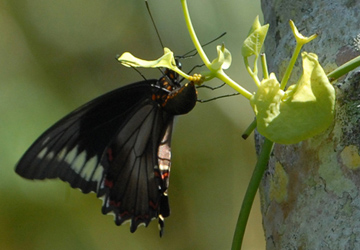Fruits and Flowers of Fall

 |
| Native bitterbush. |
Our light is changing ever so slowly, and walking around Fairchild this morning, I noticed the abundance of fruit that also marks a seasonal change. Bitterbush female trees are loaded with beautiful red berries. Bitterbush is a lovely small tree of the Miami-Dade County hammocks that grows in the West Indies and northern South America as well. The compound leaves are pointed and pretty. Bitterbush trees are usually dioecious, with male and female flowers occurring on different trees.
Bromeliads, heliconias and cycads are laden with fruit, as are the
 |
| Averrhoa bilimbi. |
figs. Iris domestica, the blackberry lily, and rain lilies have seed pods on them, while two closely related trees, the carambola and the bilimbi, are fruiting and flowering at the same time. The carambola is Averrhoa carambola or star fruit, and fall is the peak of fruit production. The bilimbi, Averrhoa bilimbi, which flowers and fruits on its trunks and branches as does the carambola, is sometimes called the cucumber tree. Its many green fruit are said to be too acid to eat, but are suitable for pickles instead.
Flowers have not gone away, however. The
 |
| Cassia roxburghii, the red cassia. |
fall means Cassia roxburghii, the red cassia, is displaying pinkish-red flowers on the tops of its graceful, long compound leaves. This lovely tree ought to be seen more often in South Florida.
By the Visitors Center, the specimens of the flame of Jamaica, Euphorbia punicea, are ablaze with brilliant red bracts and small flowers.
On the vine pergola, the wooly morning glory, Argyreia nervosa, has some interesting flowers now. The big heart-shaped leaves that supposedly look like elephant ears give this vigorous vine one of its common names, elephant climber. The leaves and flower stalks are covered with a whitish down, and the flowers are light purple with darker centers. Each trumpet-shaped flower has a white calyx that looks, from a distance, like another flower.
 |
| Monk Skipper sipping nectar on yellow alder. |
Butterflies are all over the garden, and promise not to disappoint enthusiasts who come for Butterfly Days, Sept. 25 and 26. It’s an event cosponsored by the Miami Blue Chapter of the North American Butterfly Association.
The yellow alder, Turnera ulmifolia, on the edge of the rainforest, has buttery yellow flowers that attract skippers. A Monk Skipper was helping itself to the nectar this morning. Milkweed continues to produce its brilliant yellow and red flowers that are so attractive to Monarch and Queen butterflies. The
 |
| Polydamas Swallowtail is laying eggs on new growth of Aristolochia. |
Aristolochia vines in the butterfly garden have no flowers, but the Polydamas Swallowtail butterflies were busy ovipositing on the tender new shoots. Firebush specimens continue to produce tons of tubular flowers, and attract many kind of butterflies. Find a shady spot to sit and watch.
